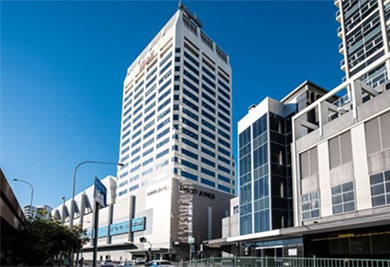The Long-Term Cost of Poorly Rehabilitated Ankle Sprains.
Daniel Graham
Podiatrist at Podiatry First
I’m sure most people (especially considering you have clicked on this article) are aware of what a sprained ankle is. If not, it is when the ankle either rolls in (inversion), or rolls out (eversion) and damage occurs in the ligaments that support the ankle.
Most common of these sprains is the lateral ankle sprain, occurring from excessive inversion. The ankle is at most risk of this injury when slightly pointed down (planterflexed), and already placing tension on the ligaments supporting the outer ankle.
“Lateral ankle sprains are the leading musculoskeletal injury occurring in physically active populations.”
Similar to muscle strains, there are three grades of ligament sprains.
Grade One- Slight stretching with damage to ligament fibres.
- Slight ankle instability, pain and stiffness in the ankle joint
Grade Two- Increased pressure resulting in partial tear.
- Increased ankle instability, swelling, stiffness in the ankle and bruising
Grade Three- Complete rupture of ligament.
- Significant ankle instability, severe pain and bruising, ankle stiffness and lack of pain after injury
Heeling rates vary between the severity of the injury. It is commonly thought that a Grade One sprain would usually take 5-14 days to heal. Grade Two sprains, 4-6 weeks and Grade Three strains, 8-12 weeks. However, being out of pain does not mean you are healed.
The most important thing to do following an ankle sprain is rehabilitation. The research shows the number one risk factor for a sprained ankle is a previously sprained ankle, and usually due to inadequate rehabilitation.
When the ligaments in the ankle are damaged, so are the nerves that tell your brain where your foot is in space and time. Without the appropriate rehabilitation, you significantly increase the risk of subsequent ankle sprains.
Poor rehabilitation and continued re-occurrence lead to a large percentage of people suffering ankle sprains to develop chronic ankle instability. You would have noticed either yourself or other people that seem to just roll their ankles for no apparent reason. Some people have difficulty walking on uneven surfaces, and others can no longer wear those trendy shoes…
So where does the long-term cost of poorly rehabilitated ankle sprains come in..?
Chronic ankle instability results in decreased physical activity and increased risks of osteoarthritis. Losing confidence in the stability of the ankles demotivates a person from partaking in activities they enjoy. Therefore, dramatically effecting quality of life.
“Weight gain, social exclusion, osteoarthritis and surgery are just some of the long-term costs that can result form a poorly rehabilitated ankle sprains.”
The cost is not just physical but emotional and financial also.
Due to the nature of an ankle sprain, proper rehabilitation consists of protecting the joint, proprioceptive rehabilitation (nerve retraining) and strengthening. Allowing time for the ankle to “heal” and feel better does NOT mean you are ready to return to activity.
Proprioceptive retraining is one of the most vital parts of rehabilitation. Without it, the nerves around your ankle do not signal your brain the necessary information as to where the foot is in relation to time and space. Therefore, the brain does not know when the ankle is at a critical tipping angle and the foot is at high risk of rolling (resulting in more damage).
So the take home message is this:
Following an ankle sprain, the structures around the ankle have succumbed to trauma that reduce the ability for the body to be able to appropriately support the ankle. This results in significantly increasing the risk of subsequent ankle sprains leading to chronic ankle instability.
The long-term consequence of chronic ankle instability are:
- Reduced physical activity affecting your physical, mental and social health
- Increased trauma resulting in osteoarthritis and constant pain
- Potential surgery to stabilize the ankle and/or clean out the joint space (arthritis)
If you feel like this is something you suffer from, or you have had an ankle sprain without the appropriate rehabilitation get in contact. You can make an appointment with me by CLICKING HERE.
Additionally, if you would like to read more on ankle sprains there is plenty of recently published research. Click on any of the articles below to be taken through.
Intrinsic Risk Factors of Lateral Ankle Sprain: A Systematic Review and Meta-analysis by Kobayashi T, Tanaka M, Shida M, 2017. This paper was awarded the prestigious T. David Sisk Award for Research Excellence and also earned the honor of Best International Paper.
The effects of ankle braces and taping on lower extremity running kinematics and energy expenditure in healthy, non-injured adults by Tamura K, et al, 2017.
Effect of taping on multi-segmental foot kinematic patterns during walking in persons with chronic ankle instability by Dingenen B et al, 2017.
Evidence review for the 2016 International Ankle Consortium consensus statement on the prevalence, impact and long-term consequences of lateral ankle sprains by Gribble PA, et al, 2016.
- admin
- Uncategorized




Leave a reply